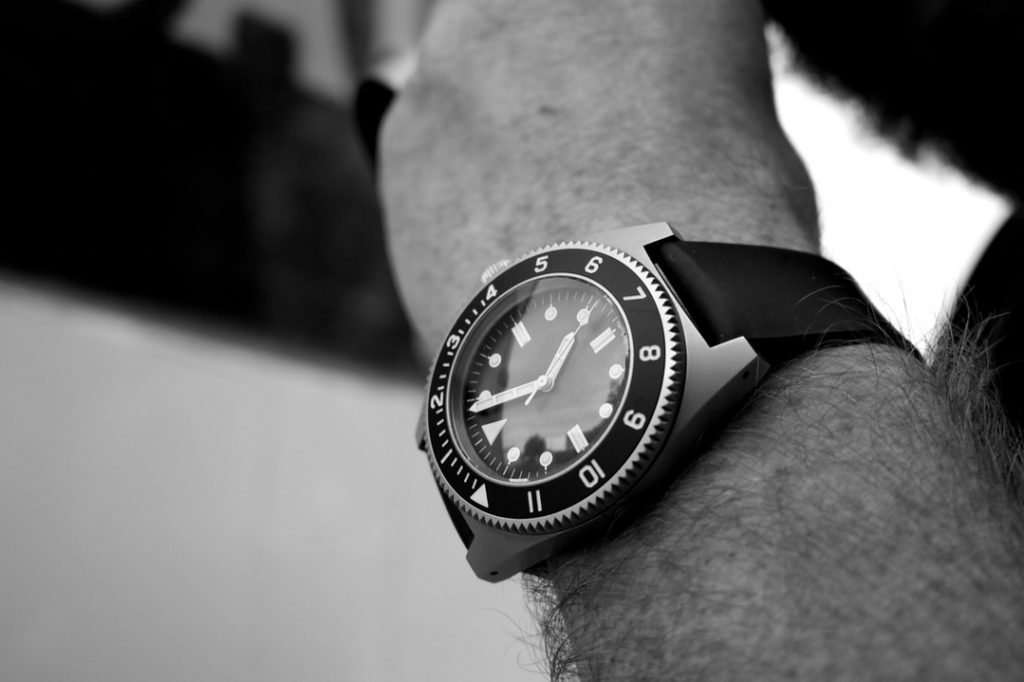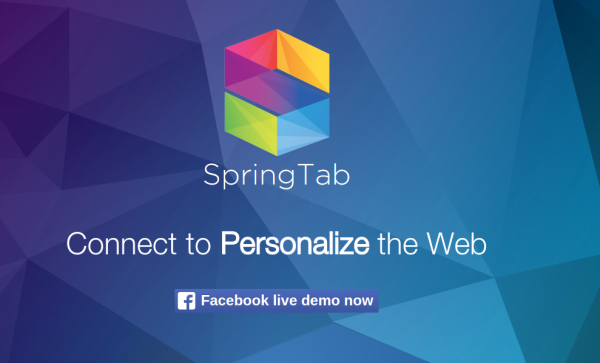
In the last few months, I was working on finding funding for my start-up. This time, I was successful, but previously I had failed more than once. You might wonder if I had opened an expensive bottle of champagne. Well, no, I didn’t, and I will tell you why.
One of my mentors taught me not to celebrate a project when the contract is signed. He advised opening the champagne when the job is done since this could motivate us throughout the whole project. But, then when is the right time to throw a party?
Should we do it, when the money arrives in our account? Is it better to wait until all the papers are signed by our investors? These are good signs, but the real accomplishment is when we feel like we have stepped on a road that leads to completing our goals.
This is what I call success. When we no longer have to rely on our inner voice solely to justify our efforts, but outside conditions also suggest, that we were right. It is one of the best things that could happen to us in our professional life. This feeling is similar to the experience we have when satisfied clients recommend our service to other potential customers.
We need this kind of confirmation to assure us, that we are on the right path. But the most important thing is how we perceive our situation.
As entrepreneurs, we have to make important decisions day by day and often find ourselves at crossroads. In these cases, most of the time I try to make decisions as fast as possible, because it allows me to see the effects quickly and correct my mistakes if needed. Naturally, we can’t always be right, but if we are able to put our projects back on the right track, the one that takes us closer to our goals, we can move forward.
One of the most important decisions I had to make in the recent past was about funding. There were a lot of alternatives, and it wasn’t clear which one has the most advantages. Boot-Strapping, using our own resources was on the table, and it had its own merits, but spending investor’s money to get ahead of the competition seemed equally beneficial. There was a third option too, which I like to refer to as “smart money”. It means finding investors, who have already been at where we are and have the experience and knowledge to help us out.
I haven’t been involved in many capital injections in my life, but I saw enough to get some insights on them, and decided to share my experiences in this post from the eight or ten occasions I’ve been involved with. I tried to get funding from U.S. and European sources, both venture capitalists and angel investors and this is what I’ve learned so far.
The right time to get funding
The most important question we need to ask ourselves before we start looking for investors is: what do we really need.
What will have the best effect on our start-up? Is it the first client, or networking, research, and time to grow?
You are probably familiar with the saying that we only need plans to change them. Which is true. But we do need them! And we need to craft flexible ones, which are easy to change later on. I recommend using Business Model Canvas and Value Proposition Canvas for this purpose since they allow weekly changes based on our development.
I believe that generally it is the best to get funding in the later stage of development, but finding investors early on, even before finalizing our ideas can also work well. The most important thing is to discuss our plans, and take into consideration the reactions of experts, before creating business plans.
If we can find the right people, we will have advisors, who can aid us with their knowledge, and with networking. I’m not talking about people, who would ask for a fee, that could take away10-20 percent from the first investments into our company. A private investor or even a similar firms looking for ways to improve their technology can help us collecting the capital and the expertise we need to enter the market
The first clients can also mean a big help at this stage, and they are my favourites. Their trust will aid us in getting attention and earn the trust of other clients and investors. The easiest way to win them over is to reach out to them, before development.
Then, we can offer them to develop the product taking into consideration their needs, or give them a free lifetime license, if they sign and transfer the money. To make it more convincing, we can complement this proposition with a money-back guarantee and promise to return their investment if they are not satisfied with the end product.
Imagine buying a mobile phone, that you can return a month after the purchase, if you’re not happy with it! Or think about Kickstarter! This is a win-win situation. The client can get an advantage over the competition without taking risks, and we will validate our project for the market by having orders before the end of development.
If we are able to enter the market from own sources and the letters of intent, there’s no need to rush funding. By bringing in investors at a later stage, we will have a chance to prove our worth to the market on our own. Also, the later we look for funding, the higher the evaluation will be. So we can keep a larger share of our company.
Capital injection is divided into circles. These are the different stages:
-
FFF – family, friends, and fools
– USA: 100 – 500.000 USD in funding, 1 million USD evaluation
– Hungary: this form of funding is mostly unknown
-
Seed
At this stage, the funding comes from Angel Investors, accelerators and venture capitalists specialized for start-ups. Angel Investors are most of the time successful entrepreneurs, who risk their own money and have some expertise in the field. Accelerators provide knowledge, networking possibilities and can connect you to venture capitalists.
– USA: 300.000-1.5M USD in funding, 2-5M USD evaluation
– Hungary: 1M-100M HUF in funding, 500.000-3M USD evaluation
-
Series A funding
The first round of bigger investments. At this stage funding comes from institutional venture capital.
– USA: 1M-5M USD in funding, 5-15M USD evaluation
– Hungary: 300M-1000M HUF funding, 3-8M USD evaluation
This round is followed by Series B, C, and D but they are outside the scope of this article.
TouchCo. and SpringTab
I tell you the story of two start-ups that I founded.
One of them was called TouchCo. Our aim was to create better versions of popular mobile games and apps, using the feedback and reviews those programs received. We were lucky, because an angel investor from FFF supported us with 30.000 Euros so we could validate our idea.
Developing the first prototype took too much time, we finished it in 6 months instead of 3, but learned a lot during that period. We realized that mobile games only have a real chance to become successful when they are published by an international distribution network or there are a lot of resources available to develop and advertise them.
We didn’t join any networks, but we were almost successful in collecting the resources, that we needed to make a breakthrough. We were two weeks away from signing a contract that would have provided us 900.000 Euros for a 40 percent stake. Then the investors backed out of the deal.
This happened after 9 months of negotiation, and it hurt a lot. We couldn’t continue with this project after this, and it is in hibernation now.
Looking back, I believe, we failed because at that time, we didn’t have the track list or the network to carry out this project like this.
While developing TouchCo, I met potential clients, but I didn’t do any work for them, since by doing so, I would have lost focus. After we gave up the project I could take on other works, and in about half a year I was able to build up thriving digital consulting agency. With this company finally I was able to collect enough capital, knowledge and networking experience to fulfill my dream: I created SpringTab.
It is a SaaS. We provide previously inaccessible statistics for content providers and e-commerce enterprises about their visitors and help them personalize their sites using this information.
This is a spin-off project, I used my existing company to develop it. I was able to do it because I had enough capital left to fund early development, without asking for money. This time, I wanted to demonstrate the viability of this project, relying solely upon my own work and the knowledge of my team. I believe this is one of the best ways, an entrepreneur can prove its capabilities.
What did I need to develop SprinTab? The most important ingredient was the team. Finding the right people was always the hardest part in my projects, but with a committed and professional team, nothing is impossible.
After I gathered my team we started to research the problems of consumers, came up with solutions and created a prototype. It is called MVP, which is an anagram for Minimum Viable Product (if you’re interested in this topic read this article: http://blog.szanto.co/3-mod-ahol-startup-visszaesese-felemelkedesig-vezethet-el/, or this book from Eric Ries: http://www.amazon.com/The-Lean-Startup-Entrepreneurs-Continuous/dp/0307887898).
It took us 4 months to get to this point. We did interviews, researched the target market, defined specifications and created the Business Model Canvas. After this, we developed a first version of the product which contained the most important part of our value proposition: the auto-personalization of web content using social data.
We spent around 13.000 USD on research and creating our MVP. On top of this, while I was working on SpringTab, my other enterprise, which produced three digit growth every year previously, couldn’t progress. I decided to take this sacrifice anyway.
Looking back at this period after connecting all the dots, I feel like, it was the right decision. But it was a very painful one. Back at the time, our efforts didn’t have visible results. Some people in my team lost faith in the success of this project, and one of the founders left SpringTab. I guess, he couldn’t see, what I saw. I just kept going, because I wanted to prove that my idea is viable, but I had to wait a long time for confirmation.
We found our first clients a few month later and an accelerator also accepted our application by then.
Accelerators AKA incubators
These institutions help start-ups reach the next level in 3 to 6 month with expert advice. Some people say that the accelerators are the new MBAs. I think companies in the first circle of founding should definitely join one of these initiatives, because the mentorship they provide, teaches more than any school or book is able to.
The level of projects the business incubators allow entering their program changes from institution to institution. The best ones, like 500 StartUps, Y Combinator or Techstars often have to decline even the best projects, because of the applicant’s large number. They mentor four to twenty start-ups yearly. Besides them, there are B level and C level accelerators too. I personally find level B good enough, but I wouldn’t apply to level C.
If you compare accelerators to universities, than StartUp500 is Harvard, and the ones on the C list are less well-known universities in smaller European countries. They might be good, but they are not on the same level. In between them, you can find accelerators, which are like the University of Southern California, which is one the 50 best universities and have some courses in the top 3.
From the ad-tech sector, I’d rate Plug&Play, Axel Springer, ProSiebenSat.1, Alchemist, hub:raum and Collider on this level. Their mentorship and network in many cases worth the 5 to 10 percent that you have to give up for 25-50.000 Euros when you enter their programmes.
We chose ProSiebenSat.1 with SpringTab. In the year, we applied they started a new programme called launchpAD. It is for start-ups in the B2B ad-tech scene, which develop products, that they could use internally. They chose us from hundreds of applicants and provided a wonderful mentorship for our company.
The CTO of P7S1 also gave us a great tip. We viewed statistics as a part of our offer, but he suggested to sell it separately too since it is can be useful in itself and it’s easily scalable. If we divide the number of visitors by a thousand, we can come up with a monthly subscription fee, that clients will be able to afford with ease. (For example, the owner of a website which has 50.000 visitors monthly would have to pay 50 euros, for the intelligence we provide.)
We also found a great way to show the value of our statistics to our clients during the accelerator programme. We decided to provide a free month for every subscriber, and at the end of this period tell them everything we learned about their visitors.
Since we promote our service this way, we were able to convince each one of our clients who had doubts about our service. Based on the Pareto principle, we identify their most active users and tell our clients what are those visitors spending on. Using our own database and retargeting we can also help them find similar users to the most active visitors of their site. When they understand this, they no longer hesitate to spend some Euros on our service.
As you could see, the PS71 accelerator helped us to develop significantly. Unfortunately, during the 3 months in Munich, we also had to discover, that we won’t be able to sell our product in Germany. Since one of the biggest German media companies devoted time and human resources for our start-up, we thought we could, but the market is too concerned about privacy to allow a kind of data warehouse to succeed.
Apart from this, the three months we spent there was wonderful, and I’d recommend this institution to any other start-up on the ad-tech scene. With that said now I would only join the programmes of A list accelerators, or maybe a few of the ones on the B list, if they provided a special value for us.
We applied to other programs since then, and couldn’t get into the list A institutions, but two other B-list accelerators accepted our applications. Finally, we decided to not enter those incubators. In the following paragraphs, I will tell you why.
Saying NO
At the second half of 2015, SpringTab produced a few thousand Euros monthly and we were constantly testing our target group. We decided in Germany to focus on mid-size companies instead of the Fortune 500 ones, since they make decisions faster, which shortens the time needed to sell our product from one year to 3-6 month. This decision also increased the number of potential clients.
If your company is still trying to find its way, and nothing is certain yet, it could really hurt to write an email that says, thank you, but we don’t need your 80.000 Euros. We did exactly this when in august 2015 Telefonica Wayra invited us to its accelerator.
When previously I wrote that you should apply to institutions from list B, I forget to call your attention to one important detail. How good this idea really is, depends on the circumstances and the stage of your company’s development.
A dear friend of mine, Szabó Dávid, the founder of Brandwee gave a pitch for Collider and honestly told them, that it is their last chance. He was in a terrible position for a negotiation, but this tactic worked. Collider gave a perfect offer for them considering the stage of the company back then.
They received 50.000 + 100.000 pounds, for which they had to pay 20.000 pounds “service fee” later, and give up twenty percent. Collider also helped with networking, which made it possible for the company to enter the U.K. market. Now, more than a year later, armed with market knowledge and a better structure Brandwee wouldn’t have to take an offer like this.
A similar thing happened to us, and this is why I declined the offer of Collider. The accelerators in most cases are not willing to change their terms. This simplifies the investing process for them, which I can understand, but it’s just not fair.
SprinTab could have acquired investments at a higher evaluation, than what Collider offered. At the same time, we needed their contacts. We started negotiating with them, and for weeks, they lead us to believe that they would change their terms. Then, in the end, they told us to accept it as it was if we wanted to give a pitch.
I really hate this type of negotiation, but getting in touch with their investors and mentors was a priority for us. Therefore, I decided to sign the term sheet, without any intention of enrolling in their program. Luckily their terms and conditions didn’t oblige us to do it, and after signing, we could do our presentation, and walk away from them.
In the event, I was able to talk to most of the investors, and mentors I wanted to meet, and I received the name and the LinkedIn profile of the others. With tools like found.ly or voilatnorbert.com I’m going to find their email addresses, and from then it is just a question of persistence and follow-ups. I got what I needed without accepting an unjust offer.
Telefonica Wayra negotiated with us exactly the same way as Collider did. They promised to work out everything for weeks, and then, after not working out anything, they told us to take the deal or leave it.
The telecommunication sector would have been ideal for us. The companies operating in this field usually have websites, with plenty of content to personalize, not to mention the promotions, digital services, and innovative projects we could have been involved with. But after a negotiation like this, we couldn’t sign an agreement. We know some other start-ups, who did, and they will provide us with the contacts we need.
The board of advisors
After saying no to 280.000 Euros of investment (from which 70.000 would have been the “service fee”), we’re on our own now. Besides product development and growth hacking we also begin to build our board of advisors.
I’m happy to give a few percent of the option pool for good advice. Tony Conrad the founder of about.me had only six people in his team, but invited twenty people to his board of advisors, before launch. You might wonder why he did it.
He knew that, if he is surrounded by good people, and has a good network, success is inevitable. His company was acquired by AOL four days before launch for an undisclosed sum, which was presumably an 8 digit number. Not bad.
Unfortunately, we’re not quite there yet. It turned out that some of the people I planned to invite to the board had contracts which permit this kind of role, so they became mentors instead. Although they can’t work as much as an advisor would, they can still make time to talk on Skype once a month or to write a few emails. They do it because they believe in the team and the project.
SpringTab is an AdTech B2B SaaS, which relies heavily on data from Facebook so the mentorship from a mid-level manager at Facebook helps us a lot. One of our other partners works at a list A accelerator, who built up a similar entrepreneurship and sold it for an 8 digit sum. She often says that B2B sales is a science, not an art. It has some well-defined steps that you have to take, and you need to be persistent along the way.
We’re on that road now, although I always feel that we are slower than we should be. I thought in a year we are going to have a big client and a 6 digit contract. It didn’t happen, but we got smaller, and great clients, who help us focus on the right places and gather experience. And while we were concentrating on other things we’ve become one of the coolest chicks in the party!
Venture capitalists specialized in early stage investments reached out to us from several countries, despite the fact that we didn’t want to receive more funding, after declining the offers from the accelerators.
I believe everything happens for a reason, and I see interest as a sign. It’s always better if the other wants it more than you do. Especially if many people try to woo you, but you only need one.
Of course, we still make contact with some investors, and we always try to apply to as many places as possible. We check f6s.com and angel.co and visit various start-up championships. This is how we won an event at Pioneers Festival and received 24.000 Euros funding with very good terms from the angel investor group Bbooster. And this is how the company of Szabó Balázs could enter an accelerator, and receive 100.000 Euros of investment without giving up a part of their company.
We started to rethink our cash flow and looked at various product and business development plans. What I see now is that from 300-400.000 Euros in the next 9-16 month we will be able to perform on a level, that can give us an insight into the future of SpringTab. After this period, I will be able to see the growth potential for the next couple of years.
What is going to happen after the following one or two years is uncertain. We could be acquired by Facebook or a company that is similar to us, but more developed. An acqui-hire by an international digital agency who needs our know-how is also possible. SpringTab’s income can also reach a level, where the owners will be able to take out bigger sums while the company is prospering. And of course, failure is an option too. One thing is certain, this cash will let us see where it all ends.
We had to choose from two opposing options. Either we are not trying to answer these questions, and we grow slowly while the company makes a few thousand Euros per month, or we try to secure larger resources using the growing interest in our product.
Since none of the options are bad, we’ve got nothing to afraid of. We don’t have to say yes to proposals that we don’t like, and this is one of the reasons we could decline the offers from accelerators.
I do everything I can, and I hope I will never have to think about what would have happened if…
Seed
In autumn 2015 I felt like the best thing we can do is to give up 20 percent for a capital injection, because it would allow us to grow our team, devote more resources for sales and be present in more places globally. I dare to say this because we’ve proven a lot with the accelerators, the clients, the products and our past. We’ll see what is going to happen.
Institutional venture capitalists specialized in early stage investments are more willing to negotiate than accelerators, but not as much as angels. Everything depends on the position. That is why it’s important to have more than one lawyer. You shouldn’t spare money on them. As one of my legal counsels put it: “it will get more expensive later.”
Finally, we got married to two Hungarian investors. I write marriage, because from now on, our lives are connected. They expect a more strict control than the accelerators or angels did, and the number of our obligations have also grown. We need to report to them regularly and create proper legal-, SLA- and other documents. This will help us prepare for Series A.
We intended to sign contracts with more than one investors, and finally, we chose two. During the negotiations, two things were surprising for me.
The first one was that after the term sheet, half of the syndicate agreement turned out to be about the required steps before the investment, which in case of an accelerator wouldn’t have been necessary.
The second one is about co-investment. We were transparent about the fact that we negotiate with more than one investor from the beginning, but we didn’t decide whether we planned a co-investment or different agreements with different evaluations.
There are many advantages and disadvantages to both type of agreements, and the experts have differing opinions about the issue. Co-investment allows the last inventor to sign with the same terms, as the early ones. At the same time, if the investors can cooperate, and one of them is willing to take on a leading role, it makes the negotiations and the creation of contracts easier.
We started to negotiate separately with each of our investors, but after a while, it turned out that both the investors and our company preferred co-investment instead, so, in the end, we took that road
It was edifying to see the different interests of the involved parties. The first investor and our company just wanted to get over the negotiations as fast as possible, while the second investor wanted the same terms as the first one. I thought that changing a two-party agreement into a three party one would take a lot of time, but it didn’t. In the end, we saved between 2-4 weeks time, and the 30 percent of the legal fees by switching to co-investment.
It took three months to finalize the agreement. We decided to look for investors in September and found our partners a month later. Then, we worked on the term sheet for 3-4 weeks. The boards decided to accept the terms at the end of November and at the beginning of December. I hoped that all three parties could sign the syndicate agreement by Christmas. It didn’t happen then and I had to wait a few more week, but finally on the eleventh of January, everything was settled.
We founded a new company for the seed circle. It’s interesting that the investment arrived at our account earlier than this company was registered.
Currently, we have investors from Germany, Spain and Hungary, and we almost had one from England too. We play in a global village, and it’s always a good idea to look for partners independently from the geographical barriers.
We had to consider two things before the seed circle: how much money could help us to develop, and scale our product, and what makes the investments “smart”. By smart I mean the added value an investor could bring besides money, in the form of contacts, mentorship, or help in the preparation for the next circle.
Conclusion
There’s a question I’m used to asking myself: what can help me the most on my way? What will aid me in my personal and professional life above all?
In the case of a start-up, it could be a good idea to ask ourselves similar questions often, and this is what I did when I was thinking about the capital injection. I tried to find out what can help the most, to make this project successful. Is it better to have a tight budget or should we try to rise above our limitations by leaving our comfort zone? Has this already happened, and now we need external sources to grow?
Our decisions should always be “smart”! Just because a possibility arises, we don’t have to accept anything. We have to learn to say no.
If we do so, we will be able to make a valid and independent decision about when to say yes.












0 comments
Write a comment